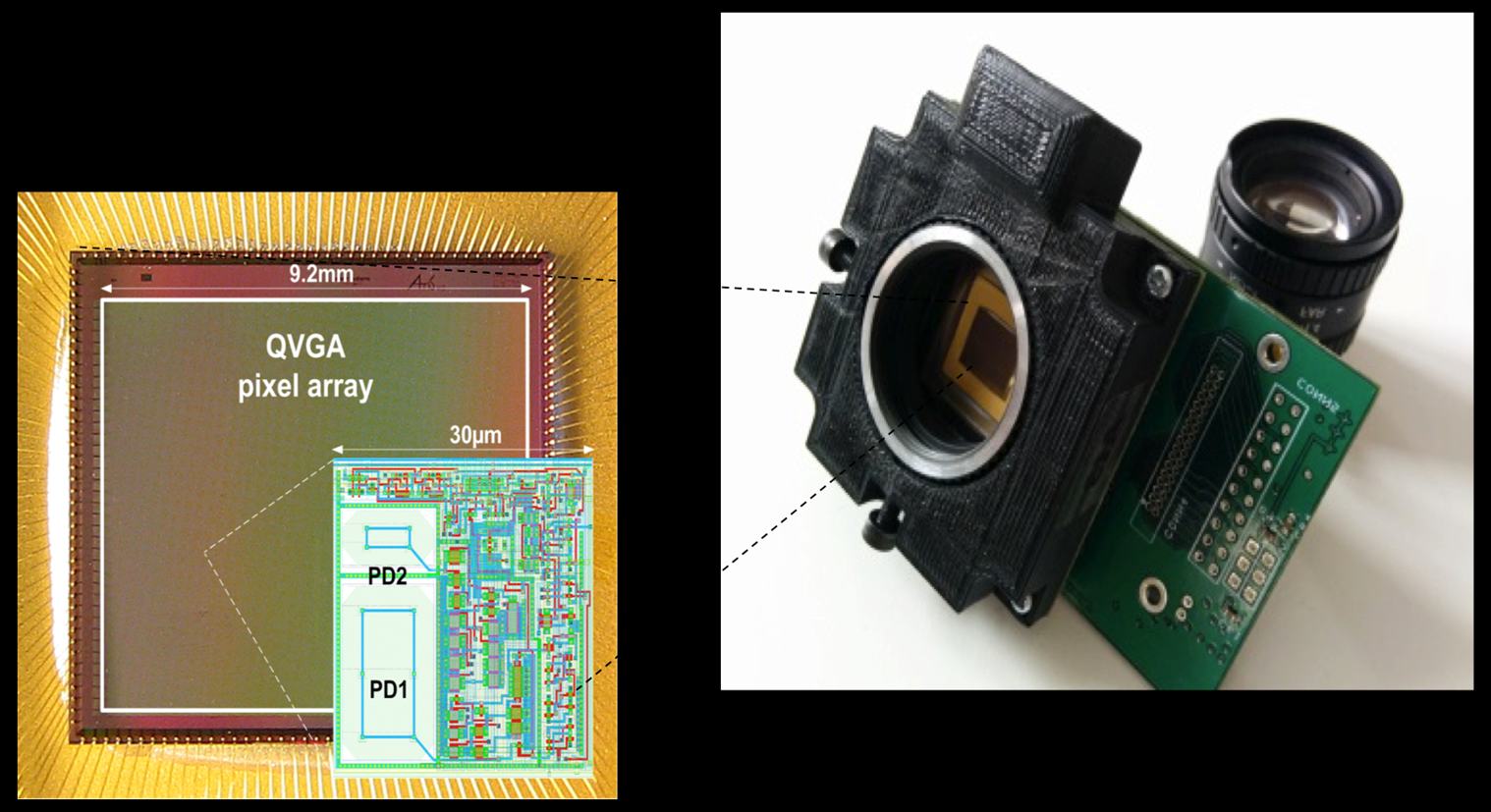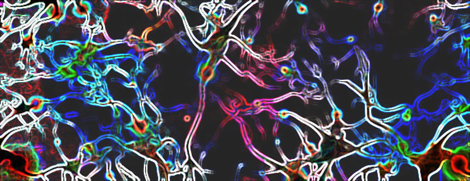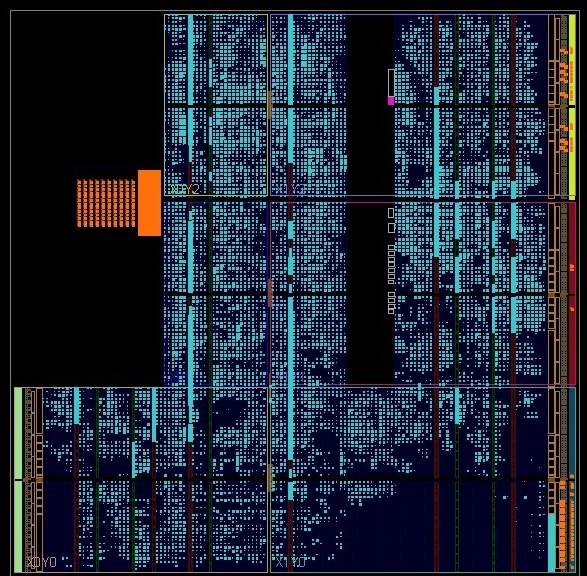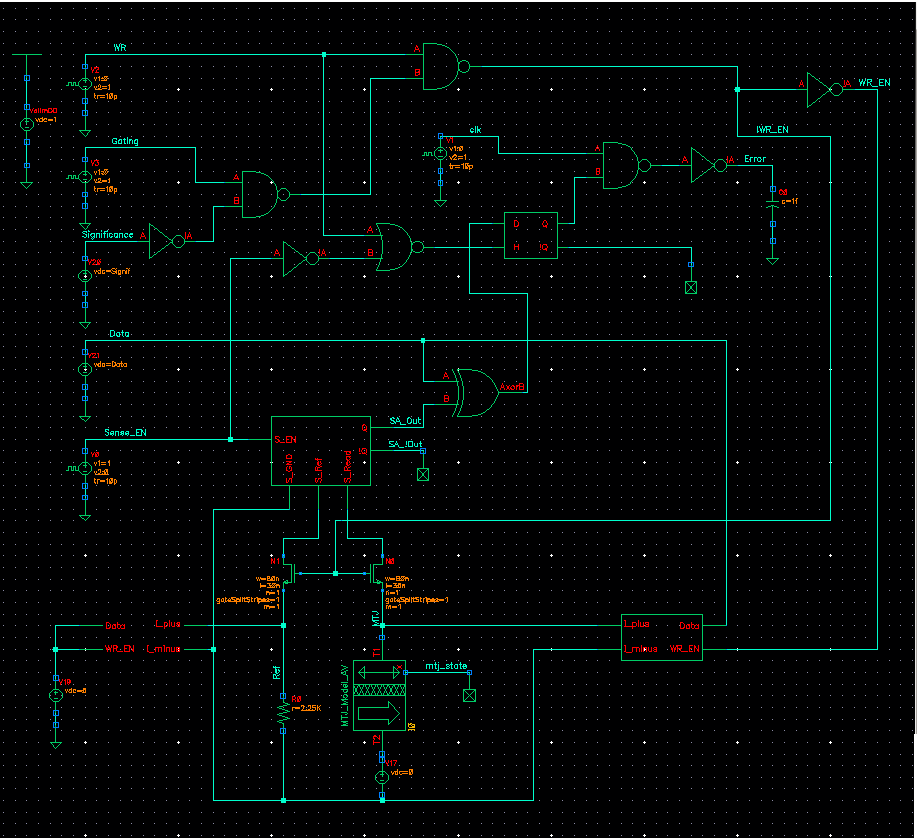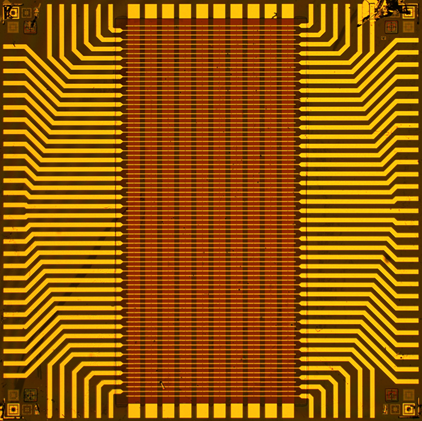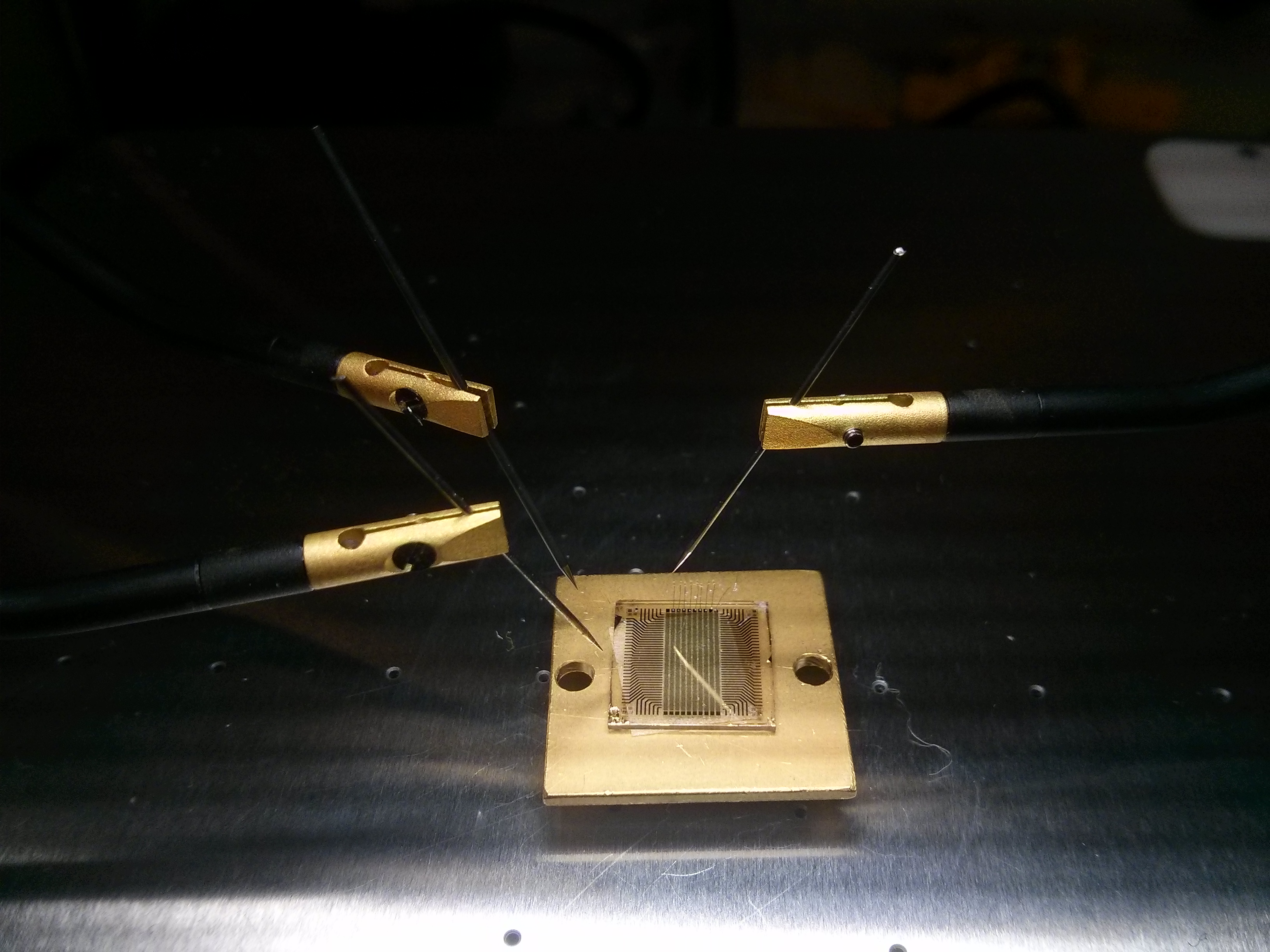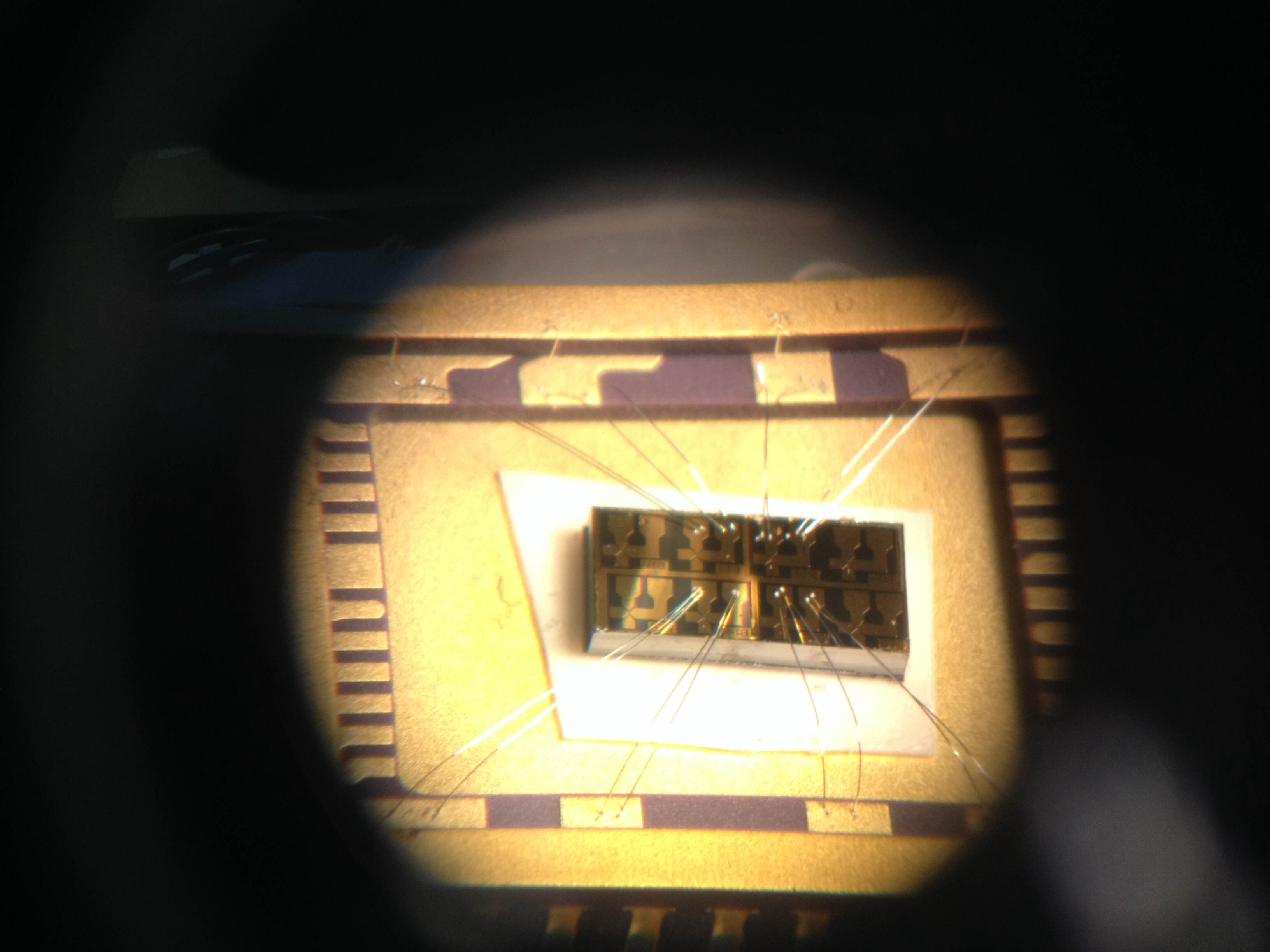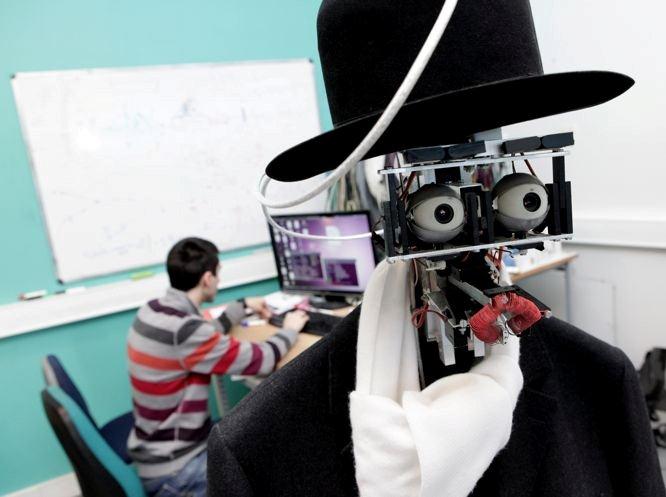The goal of the GDR BIOCOMP is to facilitate interdisciplinary exchanges around a common goal: the realization of bio-inspired hardware systems.
We seek to understand the mechanisms at work in biological systems in order to create chips based on natural computation, in particular neuromorphic, but also vice versa, to build architectures hybridizing wetware and hardware as test systems to better understand biology. In France there is a wealth of expertise in all disciplines concerned with hardware implementations of natural computation: biology, cognitive psychology, computational neuroscience, mathematics, computer architecture and data processing systems, microelectronics, nanotechnology and physics. Realizing bio-inspired chips is complex and requires advanced skills in all these disciplines. By organizing interdisciplinary meetings and conferences, our goal is to bring together different communities so that they can understand each other and work together. In addition to interdisciplinarity, one of the biggest challenges that the researcher wishing to participate in the design and implementation of a bio-inspired system has to face is the proliferation of this emerging field. At every link in the chain choices must be made among the many possibilities: what model to choose or invent, what system to build, what materials to use for this purpose? Our objective is to explore the most promising approaches for efficient hardware implementation of natural computing and to realize these bio-inspired systems with different technological substrates.
Context
The brain, and biological systems in general, are able to perform high performance calculations with a much higher efficiency than our most powerful computers, and they do it very quickly and with very low energy consumption. This finding is not new, and scientists from many disciplines have long recognized the performances of natural computing, and sought to understand the mechanisms at stake and to imitate it artificially, in particular through hardware implementations. What is new is the current context that could allow, provided a coordinated and interdisciplinary effort, spectacular advances in this field that was considered stagnant not so long ago. Indeed disruptive results were recently obtained in the various disciplines involved in the design and hardware realization of natural computing architectures, and this in a industrial context favorable to the development of new information-processing models.
Neurosciences, especially computational, are booming, and the twenty-first century is often called the “century of the brain.” Considerable progress has been achieved particularly in understanding how the visual cortex works, and the role of the different neuronal layers that compose it. These results have inspired computer scientists and mathematicians and led to the creation of ultra-powerful bio-inspired models such as deep neural networks (“deep learning”). [1] Meanwhile, recent advances in nanotechnology and materials science finally make it possible to envisage designing and building ultra-dense networks based on the hybridization of multifunctional nanodevices with CMOS even maybe soon in three dimensions and approaching the complexity of biological systems .
In addition, the microelectronics industry now faces many challenges. The biggest is to continue to increase the performance of our computers while controlling their energy consumption. The overheating related to the operation of processors not only puts at risk their effectiveness, but could, if the current trend continues, create an energy shortage. The information and communications technologies consume nearly 10% of the energy generated worldwide and the “cloud” represents the 5th “country” consuming the most electricity after the USA, China, Russia and Japan. [2] These heat dissipation problems have already prompted the industry to take an important turning point since 2005: stop increasing the clock speed of the processors and turn to multicore architectures. By increasing the number of cores, these architectures are more and more parallel. Finally, the miniaturization of components will inexorably lead to the appearance of defects that cannot be avoided, as well as increasingly small signal-to-noise ratios. The concerns of industrials therefore join those of biologists, neuroscientists and designers of bio-inspired systems: how to compute efficiently (or understand how nature manages to compute efficiently) with ultra-parallel systems, asynchronous, with often noisy and defective components !
[1] Q. V., M.- Ranzato, R. Monga, Mr. Devin, K. Chen, GS Corrado, J. Dean and AY Ng, “Building High-level Features Using Large Scale Unsupervised Learning,” ICML, 2012
[2] http://www.tech-pundit.com/wp-content/uploads/2013/07/Cloud_Begins_With_Coal.pdf
Strategic issues
In addition, the strategic issues of natural computing hardware implementation are considerable. Achieving make bio-inspired systems on chip, with high performance and low consumption would result in disruptive applications in many areas, and could even revolutionize our lifestyle.
Firstly, bio-inspired accelerators could ideally complement our sequential processors to perform certain tasks efficiently and with low energy costs. [1] Eg artificial neural networks are very efficient and competitive algorithms for recognition, classification and data mining. These applications are crucial, as noted by Intel [2], and required to manage the incredible amounts of digital data generated every day (“big data”). Bio-inspired chips, implementing these algorithms with low energy costs, could thus add an additional degree of intelligence to our conventional computers, our mobile devices or “datas centers”. The current efforts of an increasing number of companies to build neuromorphic chips (eg, IBM, Hewlett-Packard, Qualcomm) and to develop bio-inspired software (eg, Google, Yahoo ) demonstrate the interest of this approach.
In medicine, bio-inspired chips are very promising as they might compensate defective human functions with low power consumption, an essential characteristic for a seamless interface with the living. Much progress has been made recently, particularly in the field of vision.
Finally applications to robotics, as well as autonomous vehicles are obvious. In the longer term, it is even possible to use neural networks systems as brain simulation platforms to replace advantageously in terms of speed and energy consumption simulations conducted on supercomputers. This is also one of the aims of the European Flagship Project Human Brain (HBP), even if it is little involved in the contribution of emerging nanotechnologies.
[1] Olivier Temam, “The Rebirth of Neural Networks”, International Symposium on Computer Architecture (ISCA), June 2010.
[2] P. Dubey, “Recognition, Mining and Synthesis moves computers to the era of tera,” Intel Technology Magazine, vol. 09, 2005.
GDR BIOCOMP Goals
To structure the community around a common goal
There are in France and in CNRS a wealth of expertise in all disciplines concerned with the hardware implementations of natural computing: biology, computational neuroscience, mathematics, computer architecture and computer systems, microelectronics, nanotechnology and physics, and many scientists are extremely motivated by these bio-inspired approaches. The goal of the GDR is to structure the community around a common goal: the hardware realization of high performance and low consumption natural computing architectures, so that France becomes not only a pioneer but also a major player in this nascent revolution. We will strive to understand the mechanisms at work in biological systems to create chips based on natural computation, but also conversely, to build hardware architectures as test platforms to better understand the biology.
From multidisciplinarity to interdisciplinarity
Making these highly complex bio-inspired chips requires gathering state of the art skills in all required disciplines. For this purpose, it is absolutely necessary not only to favour meetings between disciplines, but also to break down barriers between disciplines. One key to competitiveness will be the knowledge that players from one discipline will have of the possibilities that can be provided by other disciplines and also the speed in identifying the right collaborators in other areas. The second objective of the GDR will therefore be, in addition of course to bringing the community together, to transform our operating mode from a multidisciplinary to an interdisciplinary. This is goes together with the formation of a new generation of young researchers who will know how to navigate at these scientific interfaces.
To identify the most promising approaches
In addition to interdisciplinarity, one of the biggest challenges that the researcher wishing to participate in the design and implementation of a bio-inspired system has to confront is the proliferation of this emerging field. Take for example the computational model: which one to choose, what approach will be most effective for a particular application is not obvious, and sometimes the answer does still not exist. Indeed, there are many types of bio-inspired computation systems. When the granularity is set at the cell, these systems are called neuromorphic architecture, or artificial neural networks. But it is also possible to place the cursor at all other levels, and consider, for example, molecular signaling mechanisms as probabilistic systems of information processing. Just considering neural networks, multiple types of models exist, differing by the neuron type (spiking or not), the learning law used etc. At the other end of the disciplinary field, nanotechnology for example, the choice is equally open. Circuits can be made by CMOS, or by hybridizing CMOS and new components, the possibilities in terms of nanodevices again being huge. For example to fabricate memristors, these components that can emulate synapses at the nanoscale, many different materials and very different physical effects are possible, and the question of which implementation is the best is a question far from resolved. The third objective of the GDR will be to identify the most promising approaches from this abundance of possibilities.
To make bio-inspired chips
The ultimate goal of the GDR is the practical implementation of bio-inspired chips. But for reasons of cost and resources, the GDR academic partners will be generally limited to the realization of small systems and to the simulation of real size systems. In particular, the co-integration of new nanodevice technologies on CMOS circuits requires a strong involvement of an industrial partner with a foundry. The fourth objective of the GDR will be to strongly involve pre-industrial and industrial players. To motivate them, the strategy will be twofold. The GDR will: 1) collect a set of tangible advances in the form of small prototypes with simulations establishing their large scale performance 2) educate industrial players to the challenges in the field and to encourage discussion between public and private partners.
Calls for projects
Finally more pragmatically, the last goal of the GDR will be, thanks precisely to the structuration of the community, to generate new French and international projects, as well as to respond effectively to European H2020 calls, and in particular those generated by the FET Flagship Human Brain Project (BPH) and those relating to the industrial leadership.


